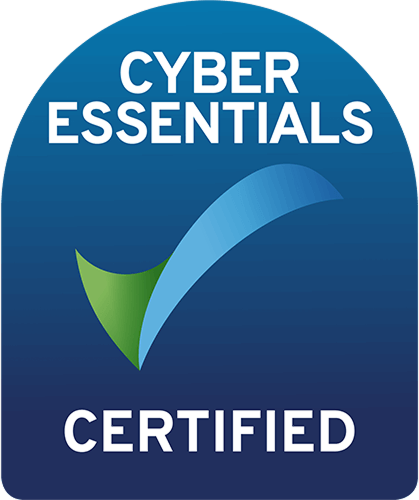
Health & Wellbeing – A Passing Fad or A Genuine Issue?
Posted on November 5, 2025
Introduction
Let’s be honest health and wellbeing often sit low on the priority list for many small businesses. Some even dismiss the topic as “a bit woke” or a passing trend. But here’s the reality: ignoring employee wellbeing costs money. It fuels absenteeism, low morale, and lost productivity all of which hit your bottom line harder than you might think.
The CIPD and Simplyhealth Health & Wellbeing at Work 2025 report shows the scale of the challenge. Absence is at a 15-year high, mental ill health is on the rise, and smaller firms are struggling to keep teams engaged and motivated. The report highlights how absence, presenteeism, and stress are major drivers of lost output in UK workplaces. Deloitte’s(1) analysis reinforces this, estimating that every £1 invested in mental health and wellbeing can return around £4.70 to £5.00 through lower absence, improved performance, and better retention. While exact figures vary by sector and company size, the direction of travel is clear investing in wellbeing pays back.
The good news? Investing in wellbeing doesn’t have to mean beanbags and yoga sessions. Simple, people-focused actions like flexible working, better communication, and early support can significantly reduce absence, improve engagement, and boost productivity.
Here’s our straightforward guide to what every small business leader should know from the 2025 report, along with practical, affordable steps you can take right now to strengthen performance and morale.
Summary of Issues and Actions for Small Business Leaders
| Issue | Key Challenge | Recommended Action |
| High Absence Rates | 9.4 days lost per worker; mental health leading cause | Track absence trends, train managers, support employees return to work |
| No Wellbeing Strategy | Only 57% have one | Create & review a simple wellbeing plan and link to business goals |
| Mental Health issues increasing | 64% of companies report stress related absence is growing | Train managers how to spot stress (earlier), introduce mental health check ins for all employees |
| Hybrid Working risks people working when unwell (presenteeism) | Presenteeism up 35% among home workers | Establish boundaries and remote wellbeing checks |
| It costs time and money to deal with this (Budget Constraints) | 39% cite cost as a barrier to resolving wellbeing issues | Focus on early prevention and measure ROI through less sick absence, higher productivity (from higher engagement) and less employees leaving. |
| Occupational Health (OH) Gap | Only 39% of SMEs use OH | Partner with shared OH providers, improve sick pay to encourage less presenteeism |
Absence Is Rising – and It’s Costing More Than Ever
Average sickness absence has climbed to 9.4 days per employee, the highest level in 15 years. Mental ill health now tops the causes of long term absence, while minor illnesses dominate short term leave. Even in smaller firms, every missed day hits productivity harder due to leaner staffing.
Action for Business Leaders:
- Track absence data regularly and review patterns.
- Encourage honest reporting to prevent presenteeism.
- Look for early signs of burnout and manage absence compassionately.
- Use phased returns to help employees ease back into work.
Wellbeing Needs a Plan, Not Just Good Intentions
Only 57% of organisations have a formal wellbeing approach. In smaller businesses, wellbeing tends to be ad hoc and reactive. Companies with a clear strategy report higher engagement and productivity.
Action for Business Leaders:
- Draft a simple wellbeing plan with clear goals (for example, reducing absence by 10% in 12 months). (download our template)
- Involve employees in choosing focus areas as this boosts buy in.
- Position wellbeing as a business investment, not a perk.
Stress and Mental Health Are Still the Top Threats
Heavy workloads and manager pressure are the main triggers of stress related absence. Around 64% of organisations cite stress related absence being the number cause of absence. Only 29% of Businesses train managers in mental health support to help alleviate these issues.
Action for Business Leaders:
- Invest in basic mental health awareness.
- Invest in training for line managers on how to spot and manage mental health issues in their teams
- Include wellbeing check ins in regular one to ones.
- Partner with digital or local mental health support providers to deal with acute mental health issues.
- Reassess workloads to avoid chronic stress in small teams.
Hybrid Work – A Blessing and a Risk
Research has shown that homeworking has reduced absence by around 36%. However, what sometimes comes with employees working from home is a feeling that they need to work (or be online) when they are ill, which is known as presenteeism. 35% of employers have seen increased presenteeism indicating that remote employees may hide stress or overwork unseen.
Action for Business Leaders:
- Create clear hybrid working policies with regular wellbeing check ins.
- Encourage healthy work boundaries by not making contact after work times, model this as a leader.
- Offer remote access to wellbeing tools or counselling support.
Tight Budgets, Smart Spending
SME’s can achieve significant impact through prevention and culture change.
Action for Business Leaders:
- Prioritise low cost, high impact actions (flexibility on working hours and locations, more recognition of work well done, and look at offering employee assistance programs (EAPs)).
- Use free resources from the NHS or Mind to help employees deal with stress.
- Track ROI of your interventions by tracking reductions of absence, enhanced engagement, and higher employee retention.
Occupational Health and Sick Pay – Closing the Gap
Only 39% of SMEs provide access to occupational health services. Most use OH reactively, after issues arise. Many employees see Statutory Sick Pay as inadequate and favour more flexible options.
Action for Business Leaders:
- Partner with shared or on demand occupational health providers. These can be gained through Employee Cash plans, at lower cost to the employer.
- Offer short term enhanced sick pay to reduce presenteeism.
- Use phased returns to reintegrate employees smoothly.
Conclusion
Doing nothing about employee health and wellbeing isn’t cost-neutral it’s expensive. For small businesses, lost productivity doesn’t just show up as sick days; it appears when staff are disengaged, under pressure, or when owners and managers spend valuable hours dealing with people problems instead of growing the business.
Put simply, a small business that dedicates even a few hours a month to improving health and wellbeing can expect measurable returns in productivity. Less time lost to sickness, fewer disruptions, and more motivated teams all translate into real commercial benefits.
The alternative, doing nothing guarantees higher costs through avoidable absences and wasted management time. A strategic, people-focused approach isn’t “woke”; it’s smart business. Prioritising wellbeing is about protecting your time, your productivity, and your bottom line and the data shows it’s one of the best investments a small business can make.
Contact us today to book a free 30 minute consultation or get support with next steps:
+44 (0) 2382 518 004
info@smehrconsultancy.com
www.smehrconsultancy.com


